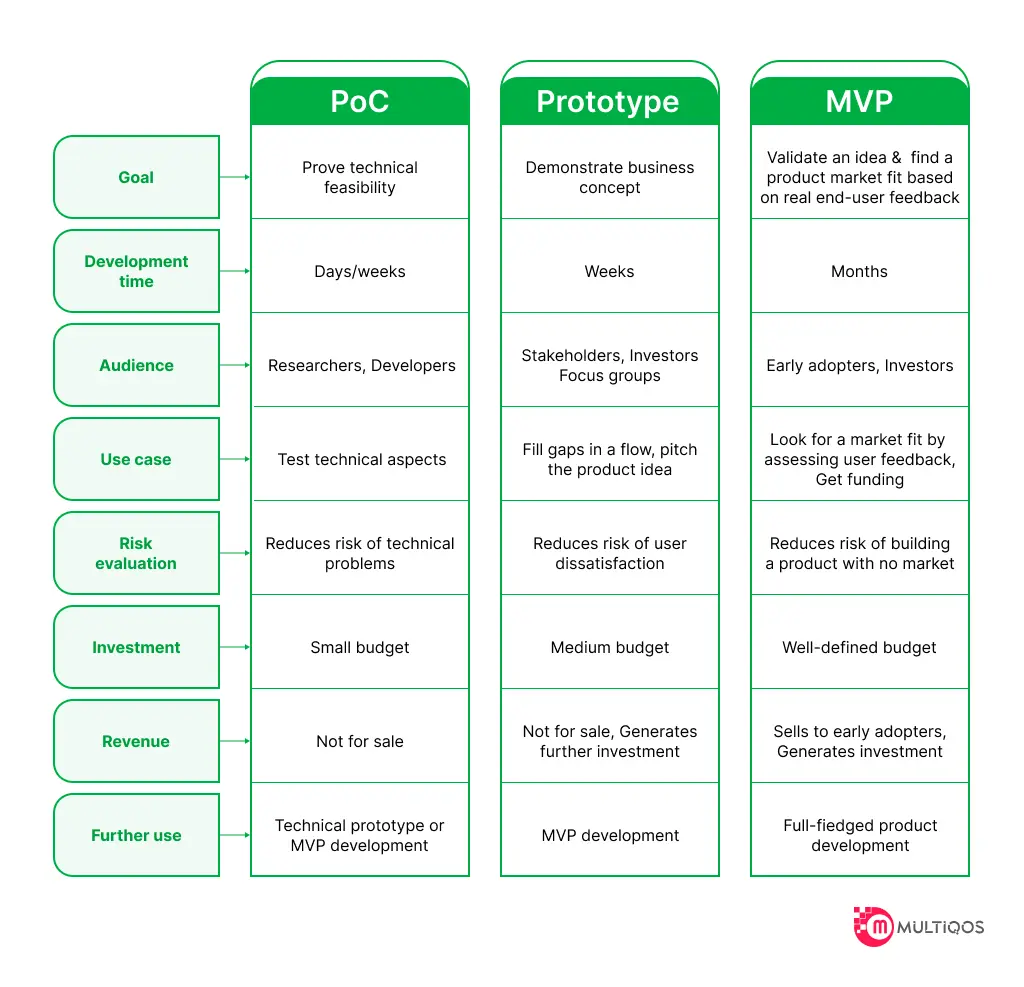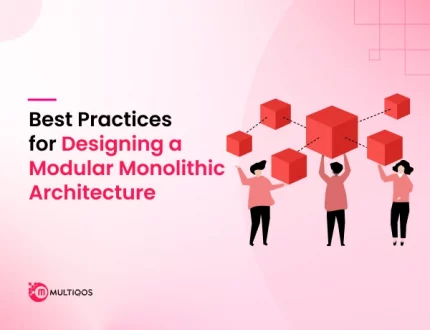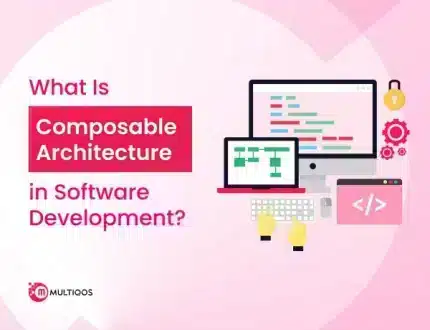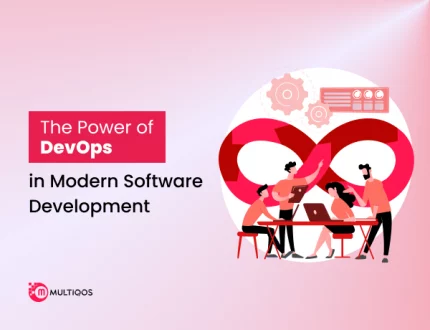PoC vs Prototype vs MVP: Making the Wise and Ideal Choice for Your Project
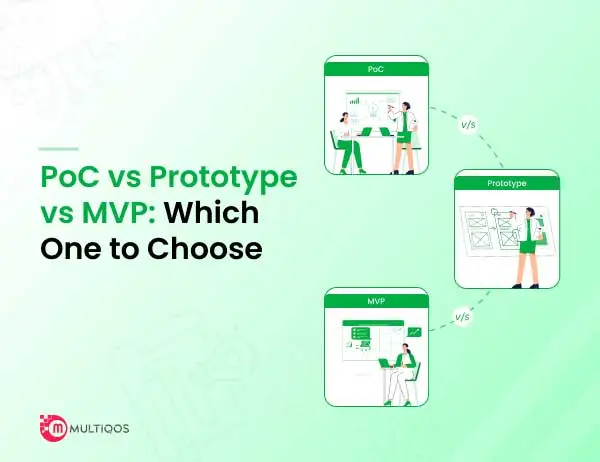
Picture that you can develop a revolutionary solution for a new product. You’re thrilled about the possibilities it can bring, but you also know that there are risks and challenges set to show up along the way. What is the best way to make sure that your idea works out? How do you assess its feasibility when you already know that this will take a considerable amount of time and funds?
It is on these stages, Proof of Concept (PoC), Prototype, and Minimum Viable Products (MVP), that they are employed. These stages are regarded as critical milestones which help you to validate your concepts, improve on your strategies, and diminish risks prior to full-scale development. Despite this, knowing the differences between these stages and applying the right approach feels like hard work.
In this blog post, We will unfold the notions of PoC, prototype, and MVP. Firstly, we will discuss their individual characteristics, application fields and benefits, hence providing you with insights that will help you to prepare your project and make the right decisions. Hence, It’s time to join forces and explore together which option suits your project better.
A Quick Overview on Proof of Concept (PoC)
A Proof of Concept (PoC) is a preliminary study that is done or a small scale demonstration of how a concept or an idea can be verified about its feasibility. It is intended to test out whether a given procedure would do the trick or in case there is a better approach for design execution. PoCs typically occur in the first phase of the business venture that is dedicated for determining the technical viability of an idea, before committing to the extensive development.
Basically, a PoC is concentrated on combining expectations and actual results to find out if the idea is feasible or not. Typically, it can only address the specific aspect of the principle that is being questioned. Clients are usually satisfied with the quick and inexpensive nature of PoCs in contrast to one with a large-scale implementation. Their main agenda is to find the best way to show that the concept can be taken to the next level and can be turned into the working prototype.
For instance,
- New Technology Adoption: Before adopting new technologies companies usually consider PoCs in order to give a receive a positive vibe about them and/or to approve them with their existing architecture. Such as, when a company plans to embrace the blockchain technology, it probably tries to check its performance through a PoC evaluation.
- Complex Software Development: In the software development sphere, specifically in the complex systems, PoCs are often used to confirm the functionality of the architecture or the method of building deployments. The POC can be created to do many things. For example, when a team is developing an algorithm for efficient data processing, they often use a PoC to test its performance and efficiency.
- Hardware Development: Software prototyping is used within the hardware development to check the practicality of the layout or even if a new design or technology is feasible. This can be illustrated by the instance where a company producing a new type of electronic device would set up the device to test the functionality of the main components.
A Brief Rundown on Prototype
The prototype is a test model designed to be introduced first for the purpose of checking and validating its design and performance. Different from the Proof of Concept (PoC) that is mainly related to technical validity, the prototype is about end-user experience and product innovation. Prototypes are designed as means to get feedback from the users and stakeholders, which is in turn being used to polish and enhance the product on a regular basis.
Key Characteristics of Prototype:
- Detail and Functionality: In most cases prototypes are more than PoC; they usually show how the main functions look and provide basic UI. It is an attempt to imitate the look and the feel of those that were created.
- User-Centric: The real end-user becomes the focus, making prototypes come to life. They are the ones to assess the usability, collect feedback, and identify if the problems are there and what we need to improve.
- Iterative: Prototyping goes through an iterative process, where many versions of the prototype are made and tested. Thus, it is crucial to strike a balanced price for the product which outweighs all the cost factors associated with its production and manufacturing. The next version to be released tries to better even the previously made version as the developers get a lot of useful information from user feedback during tests.
Common Examples of Prototypes:
- Low-Fidelity Prototype: The low-fidelity prototype ultimately is an uncomplicated, flat structure representation of a product. It is usually the stage of visualizing the product concept, which is shown as sketches, wireframes or other similar tools to provide an understanding of how the project will look and function. Low fidelity prototypes may be applied during initial design phases, when a designer investigates and explores numerous assumptions and concepts.
- High-Fidelity Prototype: A high-fidelity prototype is usually more advanced than the preliminary versions and looks quite similar to the fully-functioning product. It will comprise different engaging online features like buttons, drop-down menus and navigation buttons just to experience the users. Prototypes of the highest quality, in this regard, often help to ensure that the product will meet its expected performance and ease of use.
Industries that Frequently Use Prototypes:
- Software Development: In the software production, prototypes to debug a user interface and the overall capacities are normally applicable. Makers produce prototypes which are then tested by various users and stakeholders, whose feedback is taken into consideration in the re-working to improve the final product.
- Product Design: In the world of industrial design, prototypes are the instruments to view the product flowing in the physical environment, as the shape of it, size, usability and other details are under examination. Prototypes which helps the designer to understand if the product is aesthetically good and also is working well before producing it.
A Sneak-Peek into Minimum Viable Product (MVP)
The minimal viable product (MVP) is a version of the product that only considers the fundamental features necessary to satisfy early customers, and provide information needed for later development. The first objective of an MVP is to ensure an idea passes the viability check without requiring huge amounts of resources and investment. As opposed to a prototype, which is often created for design and functionality, an mvp is a functioning product which people can use.
Top Features That Make MVP Famous
- Essential Features: MVP comprises the top most important core features of the product that let the product operate as designed. These features are chosen taking into consideration the product’s positioning in the market and the requirements of the audience.
- Usability: Although an MVP would lack some of the fancy features of a developed product, it needs to enable users and provide some value to the early adopters. The strategy is based on giving the customers goods and services that solve a problem or meet their needs.
- Feedback Loop: Having customer feedback as one of the traits that define the MVP of a product is one of the important aspects. The user input from the product usage integrates to the product update loop in order to detect and fix the bugs, while adding more additional features.
Here are a couple of famous examples for MVP –
- Dropbox: Dropbox came to life as an MVP that had a very simple idea behind – file sync and storage. The first version of Dropbox simplified the function of file storage and sharing and enabled access to data on different devices. By applying this basic functionality and soliciting feedback from early users, Dropbox was able to determine its value and make improvements before adding additional options.
- Airbnb: Airbnb launched as an MVP with a web page that facilitated people getting a mattress to sleep on when they were visiting your city. The early founders of Airbnb, who were not certain whether their idea was worthwhile or not, created a simple website to get started and received feedback from users which helped them begin the developmental stage to make their ideas into a shared economy rental platform.
Three Top Benefits of Using an MVP Approach:
- Reduced Risk: From the very beginning, firms can minimize their initial indemnification by giving MVP a try. If the pilot performance is not acceptable, the company has the possibility to switch to another type or to stop the development without serious expenses.
- Faster Time to Market: Developing an MVP lets one company accomplish releasing the product to the target market quickly. This early entry can also serve as the source for competitive advantage and help companies to obtain additional information on actual users.
- Iterative Development: The MVP methodology is suited to iterative development, in which each iteration brings in later versions that make use of the insights gained from earlier versions. Furthermore, these iterative steps enable business to implement product improvements according to the practical use conditions and comments from the market.
How to Choose the Right Approach for Your Project?
Here we place a few critical factors to consider while choosing the right approach for your project –
- Project Goals: Looking at the targets you might want to reach. Whether your aim is testing a new concept, validating a design, or launching a product to market, this collaboration will provide you with valuable insights. The objectives of your project will be the foundation upon which the choice among—PoC, Prototype, and MVP—will be determined.
- Timeline: Make an estimation of the timescales for your project. MVPs are usually quick to market, while significant time for Prototyping and MVP usually takes more steps for development and testing. Whether a project-based approach, or a more flexible time limit, consider the timing of your project.
- Budget: Evaluate your budget for the detailed work. PoCs, on the other hand, tend to be less expensive than Prototypes or MVPs whose elaboration implies more resources beyond a mere redemption. Select a method of improving living conditions that can be accomplished with financial resources that are available.
- Target Audience: Compare and contrast the demands and choice of the target audience. Prototype and MVP are tools to get response from users, to get the right perception and preferences of the audience, you must have a sense of choosing approach (user expectations and preferences).
- Technical Complexity: Assess the technical complexity involved in your project. Incubators, ProCs are more effective for technical feasibility testing. As for usability and functionality testing, MVPs and Prototypes will work better. Develop a way to implement the project in line with the technical specifications required of it.
After considering the above factors, you need to take a few mandatory steps to make sure that your decision stands true to your businesses’ end-goals –
- Assess Project Requirements: First begin the analysis of your project specifications deeply. Find the key goals, restrictions, and stakeholders; figure out the supply you have and how it can satisfy the demand; who is the target audience or client who will take part in the project.
- Consult with Stakeholders: Sit down and talk to the principal stakeholders such as team members, customers, and investors to be able to share ideas and thus influence the decision process. Their observation could be just what you need to be guided through making wise choices about the most effective strategies.
- Weigh Pros and Cons: Assess each approach for its advantages and disadvantages to see if they will lead you in reaching your project objectives and/or will be accepted by the stakeholders. Such orientation should be primarily ensured with having in mind such components as properly of the speed of process, its cost, and possibility itself of the validation and education.
- Make an Informed Decision: Your evaluation and input from the stakeholders will help determine the approach you will use that fits in with your stated goals, available timeline, money, target group, and complexity of the task. It is important always to remain flexible with the tactics you apply so that you can adjust your strategy as the project develops and as new data surfaces.
By carefully considering these factors and following a systematic decision-making process, you can choose the right approach—whether it’s a PoC, Prototype, or MVP—for your project, setting yourself up for success in the development process.
Expert Tips and Best Practices
- Start Small, Scale Fast: All three approaches emphasize starting with a small, manageable scope and gradually expanding based on feedback and validation.
- Customer-Centric Development: Incorporating customer feedback early and often is crucial for success. Understanding customer needs and pain points drives product development in the right direction.
- Iterative Improvement: Continuous iteration based on feedback helps in refining the product and enhancing its features over time.
- Cross-Functional Collaboration: Successful projects involve close collaboration between technical and business teams, ensuring alignment with project goals and customer needs.
The Final Lines
It is very important for any team that is responsible for product development to recognize the features that distinguish Proof of Concept (PoC) from prototype, and from Minimum Viable Product (MVP). Each method has its own role and brings unique benefits. These methods include testing the ideas out, designing simulation runs and getting user feedback, that can help the team with their further work.
This being said, the process of choosing a particular approach must start out with a clear comprehension of the scope of the project and the requirements. This way you will be able to set project’s targets, be aware of potential barriers encountered, and to prepare for effective implementation. You can pick the right approach and stick to best practices, in turn making the likelihood of a fruitful product delivery more apparent that it serves the customers accordingly.
Conclusively, PoC, Prototype and MVP are key factors in the product development process, which, step by step, help to validate ideas and to bring products to market. Knowing these sorts of approaches and selecting the right one in your project enables you to increase the chance of getting success and give to the buyers the product they will be glad to have.
FAQ on PoC vs Prototype vs MVP
The main hinge-pin of their difference is purpose and scale. A PoC (proof of concept) is aimed at showing the feasibility of any idea, a prototype is the preliminary build of a product to test its design and functionality and finally, an MVP (minimum viable product) is an early version of the product in its functional form but with only the essential features that customers will use and provide feedback.
Adopt a capital of proof (PoC) when you want to corroborate the feasibility of a conceived idea or a technology and further its scaling The PoCs are the proof of the concept and serve to provide the technical viability towards the new idea execution and taking care of the risk issues.
It is a tool that helps you create your idea of the product and obtain users’ input, as well as test your design options. They can help you determine the problems right before the start of the development when still refining the product; so, you won’t need to invest in full-scale production.
The MVP or Minimum Viable Product could work for you if you wish to deliver the idea of your product to customers, receive their feedback about product upgrades, and reduce risks connected with product loss. MVP is a way to prove the acceptability of a product with minimum expenses.
One misconception people tend to have is only regarding the MVP has anything to do with the earlier version of the final product. The ideal MVP would only include the most critical features, those that deliver value for the first set of customers and helps measure what can be developed for the next release.
To reach a decision, you make a list of factors, including your project goals, the timeline, the budget, the target audience, and the complexity of the mission. Evaluation is a prerequisite of deciding if the PoC, Prototype, or MVP is the best choice for your project.
Yes, the combination of these approaches can be successfully applied in your project as well. As an illustration, one may commence with a PoC that will help identify the accessibility of the idea or idea, then continue to a Prototype to develop the functionality and design, and finally end up with an MVP to check the product with the market.
Get In Touch

